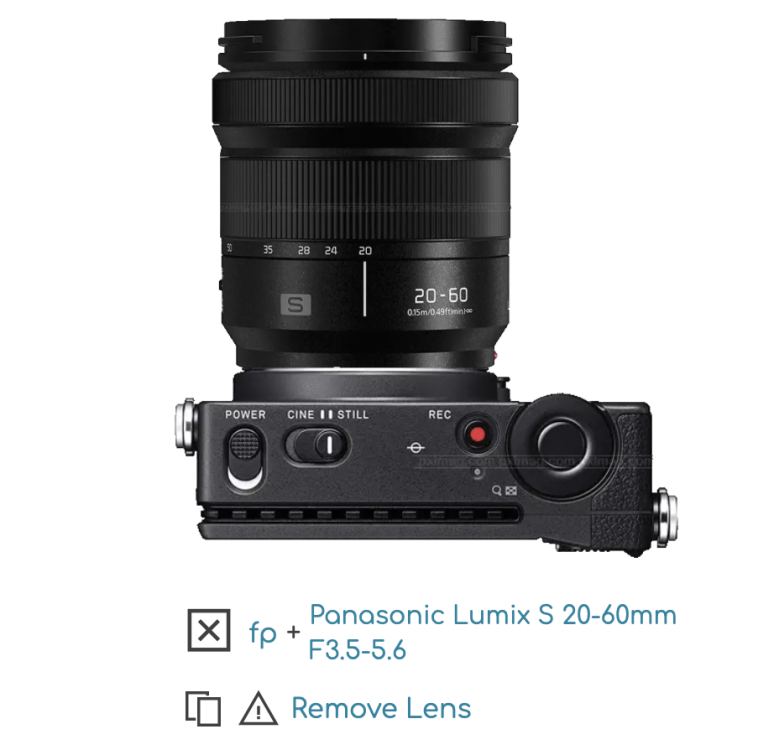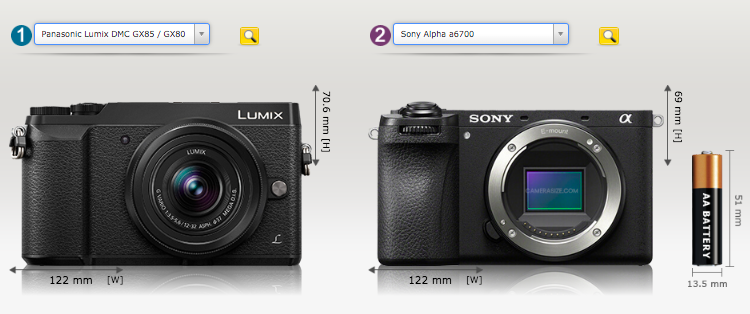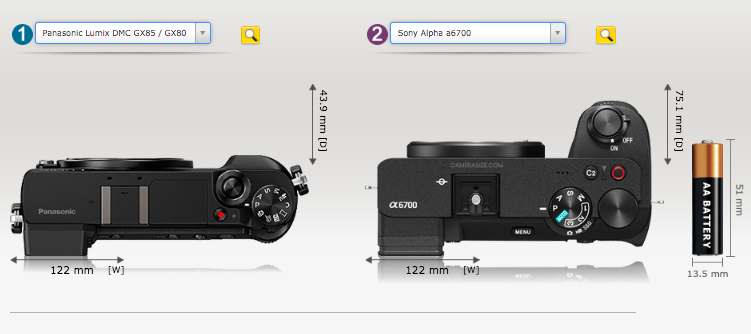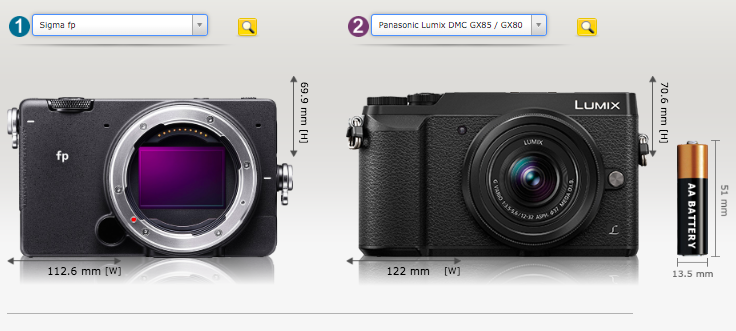Leaderboard
Popular Content
Showing content with the highest reputation on 03/04/2024 in all areas
-

Smallest MFT camera with usable AF-S, decent DR, and dual-ISO?
John Matthews and one other reacted to BTM_Pix for a topic
The new 28-200 is roughly the same size and weight as the 20-60mm so it is a lot more balanced to the Fp. It has a a great range and having the OIS offers an interesting proposition of it turning the Fp into a very compact Cinecorder. However, it is very, very slow on the long end though, particularly for only 200mm. Not that ultra shallow depth of field is the be all and end all of course but f7.1 is a bit of a stretch. Of course the swing to that particular roundabout is that you don't have to worry so much about the camera not having sentient AF !2 points -
I had a TM700, it was not all brilliant, fan noise was picked up by the mics, and the codecs were not great with quite a bit of compression artifacts noticeable, but was much better than most other options at that time. The form factor though is definitely much better than using a photography camera for video. I moved to a camera because they supported more formats, I wanted 4K but didn't want to drop back to 25P after 50P HD (in PAL land), and no camcorders in that sort of format supported 4K @ modern frame rates, and still don't. Unfortunately there is no money in camcorders anymore for the likes of Sony or Panasonic to invest in the R&D to go into bringing anything new out in that form factor, the mobile phone killed them off. The mobile phone has also killed off a lot of point and shoot cameras. MarkusPix also loves small camcorders for all the reasons discussed here.1 point
-
It does seem to be a case of the missing Panasonic GX-series camera with modern sensor. Revisiting the lineup, each with their smallest equivalent of a 24-70mm and a 24-240mm, here's the GX85, the A6700, the FX3, and the FP: The A6700 seems to have good options in the 18-55 and 18-135mm variable aperture lenses, which aren't too big. The FX3 would be the choice for Sony FF due to its high-ISO performance, and the tiny 28-60 really is tiny. The 24-240 is a lot bigger than the 14-140 on the GX85, but it's pretty small for FF. Lastly, the FP seems to only have OIS options for 24-105 and 28-200, but they're not in the camerasize database, so pictured above is the 24-70/2.8 which is a tank. Canon and Nikon are notably absent. By the time the FX3 and FP are in the mix, we've deviated so far from the GX85 that we may as well be having an open house. I guess the summary is that there isn't anything in MFT, but if I wanted to completely re-buy everything in my entire camera bag, there are options that are larger, incredibly more expensive, and better, but no-where near better enough to make me consider any of them for a single second. The more I think about it, the better the AI options in post seem.1 point
-

Smallest MFT camera with usable AF-S, decent DR, and dual-ISO?
Marcio Kabke Pinheiro reacted to BTM_Pix for a topic
I think I droned out these exact same thoughts in the G9ii or some similar thread about MFT but I'll repeat them anyway 🙂 In terms of a new camera, I honestly think its time to give up on Panasonic producing that specced up GX85 that everybody knows they could make if they wanted to. In the absence of the "new" Olympus not doing anything to move the MFT story along either in terms of a compact then something like the A6700 is that camera now. As well as being a larger sensor, it ticks every box of what is being asked for in terms of being dual native ISO, 10bit 4:2:2 internal, IBIS, class leading AF, LOG and a very good out of the box profile in S-Cinetone. Very flexible mount in that it can even take your MFT manual focus lenses and has very good options like the Meike EF>E which will give you full AF of Canon lenses with the bonus of variable ND. In terms of native lenses, there are a lot more E mount options now compared to when, say, the GX85 launched and it is seeing more releases every month unlike MFT which is slowing now. The writing was on the wall when Sigma expanded their compact f1.4 prime lineup with the 56mm and didn't release an MFT version. Their two compact contemporary f2.8 zoom lenses are also not available in MFT of course. Size wise there isn't anything in it from the front and the GX85 is actually a fraction bigger. The A6700 is deeper but most of that is attributable to the chunky grip which, to me, is no bad thing as the GX85 is not chunky enough for me and the A6700's incorporates a dial too. Price wise, it is a lot more expensive than the GX85 was on launch but so is everything else now and it is significantly cheaper than Panasonic's latest MFT camera, the G9ii. The virtual shark jumping price of the G9ii makes me suspect that even if Panasonic did produce a new specced up GX85 that it would likely be at least as expensive as the A6700. If you want to be closer spiritually to a combo of the GX85 and OG Pocket then, if you embrace the quirks, the Sigma Fp is well worth a consideration particularly as the used prices are dropping. Personally, I'd add the EVF-11 as it is so much nicer to shoot with whilst at the same time you can remover it and leave it in your pocket if you need to go smaller. The tilt action of the EVF enables you to press the camera to your chest to offer a lot more stability when handholding. That is important because you lose IBIS of course but you gain RAW and, as with the AF of the Fp, the internal 8 bit 4K is far more serviceable than people give it credit for and if you only need HD then its 12 bit internal. As with the EVF, the modularity means that if you want more capability in terms of bit depth then you can add it easily and discreetly. The Fp has largely been forgotten/written off by an awful lot of people around the world but in Japan, in particular, there is some absolutely lovely imagery being uploaded to YouTube every week from it.1 point -
Here is a collection of 10-bit OMLog400 and HLG files (and a couple of stills) from my OM-1 - https://drive.google.com/drive/folders/1527WMHFXJmDvTGI74QINJQdstgJPhXyt?usp=sharing All are FHD, using shutter priority ay 1/100s (auto-ISO and auto-aperture), auto WB (with the 'keep warm colors' option on) and C-AF set to a medium central area - so pretty much 'point and shoot' video. Lens was Oly 12-40 F2.8 pro. IBIS was sensor shift only, mostly on the maximum stability '+1' setting (which can cause jerky pans - the standard setting is '0').1 point
-

Smallest MFT camera with usable AF-S, decent DR, and dual-ISO?
kye reacted to John Matthews for a topic
Not a single Olympus or OM System camera has dual ISO. None. Otherwise, the best Olympus camera for the size is the OM-5 or E-M5 iii.1 point -
Well secretly… I had a pair of EM5 ii’s for a year for my ‘pro’ video work and used for some ‘pro’ photo, looking at going even smaller and lighter than Fuji X APSC. But in the end decided that using that P word, although the output was good and loved the size, weight and build, it was not quite ‘P’ enough for my needs. When the OM-1 came out, I trialed that and once again, loved everything about it except for that final X amount of P’ness. (Do not read that out loud). If however, I wanted a hybrid system and not a working P, I’d invest in a small system based around the OM-1. Probably with the 12-40mm f2.8 as my main lens and something longer if I went on safari or was interested in birds. The feathered type. I am very much interested in the featherless variety, but from within legal parameters. I do not wish to ever become a person of interest to the feds. There is also the current OM-5 which is kind of like a smaller, lesser OM-1, but then may as well go for a dirt cheap used EM5 ii. And then there is also the super stylish Pen F, but not sure what video capabilities it had…1 point







